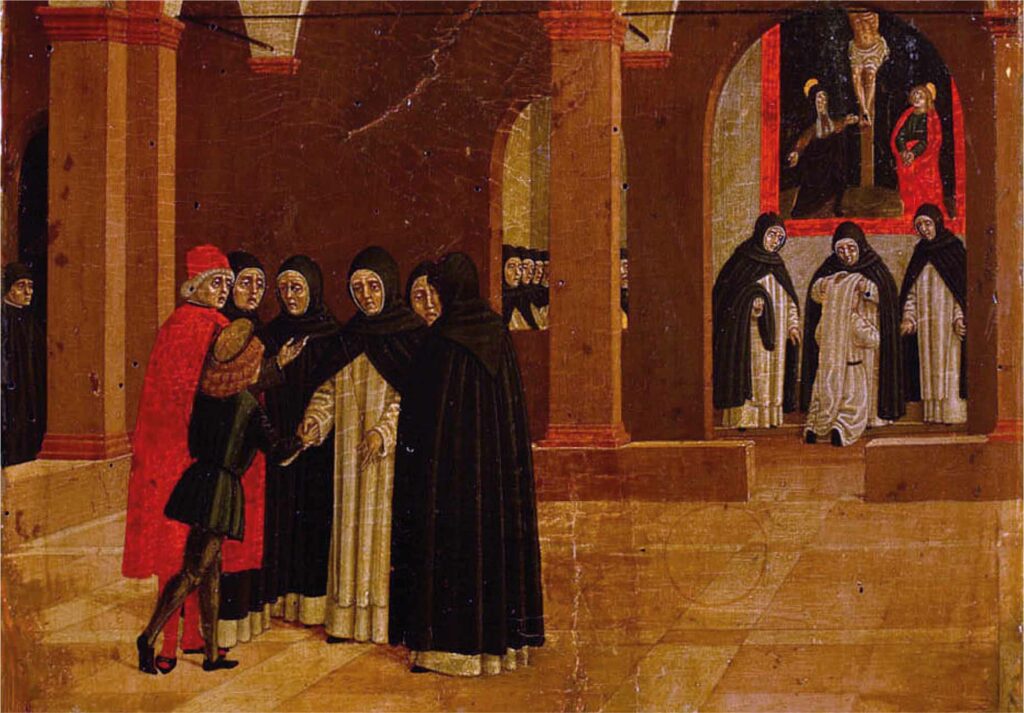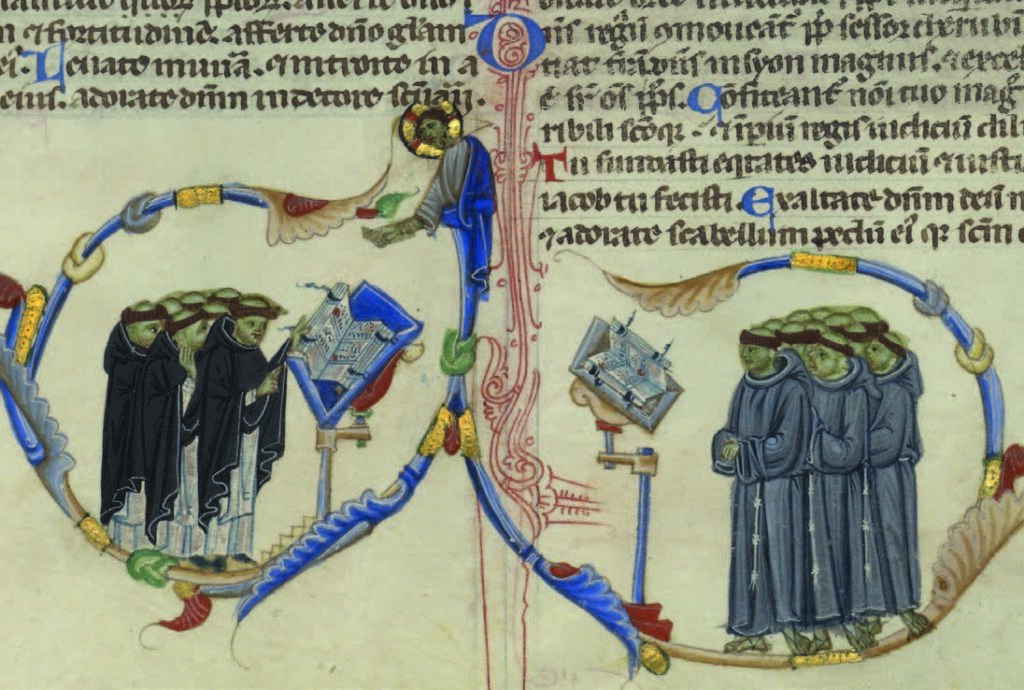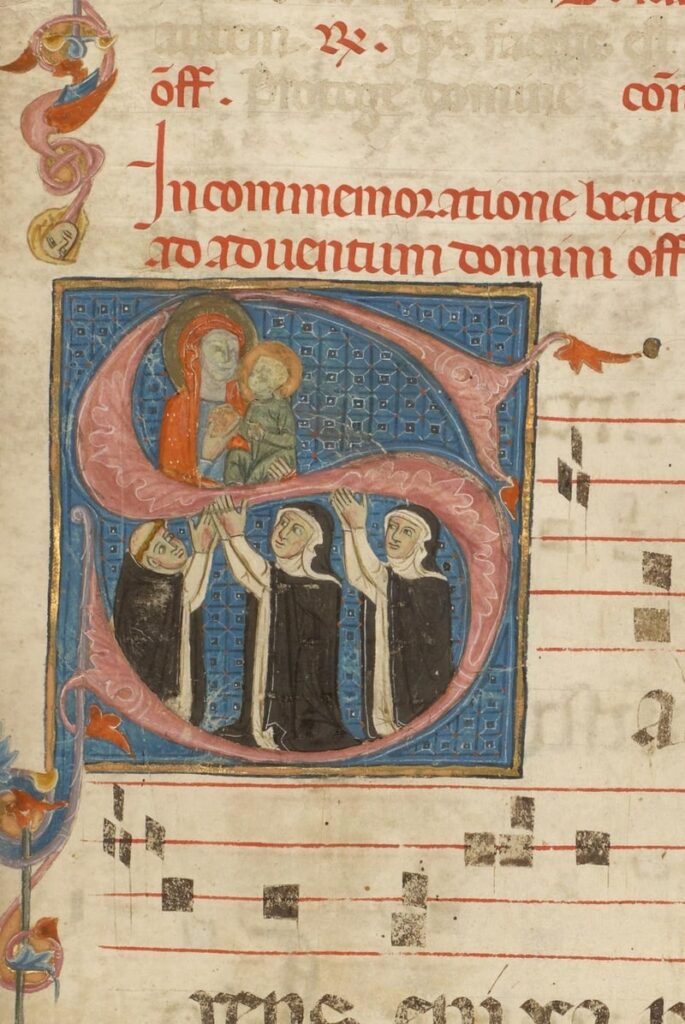History 3: The Black Death

Rise to Great Influence
The Dominicans rapidly spread throughout the British Isles. By 1307, just 86 years after their first arrival, 83 Dominican houses had been established in the British Isles (43 in England, 5 in Wales, 11 in Scotland, 24 in Ireland).
The friars became an established part of English society and the Church. In 1272, Robert Kilwardby OP was appointed Archbishop of Canterbury and later Cardinal. He was one of 20 friars to serve as bishops in the British Isles in medieval times. Others would serve as confessors, advisors and ambassadors.


Sr Emma Wynter, a sister of England’s only pre-Reformation Dominican nunnery.
Sr Emma Wynter was a fifteenth-century nun who lived in the nunnery of St Mary and St Margaret, Dartford, the sole Dominican nunnery in pre-Reformation England. The first four nuns arrived from France in 1356 or 1357.
We know almost nothing of her except the very little to be gleaned from three manuscript books in which her name appears. But these can reveal something at least of the spirituality that informed her life and those of other Dominican nuns in her community.
One, which she herself had commissioned, is now known as ‘London, Society of Antiquities, MS 717’. It is a fairly plain book of hours with additional prayers, and has been described by Paul Lee as ‘a chance survival of what must have been the most commonly found kind of book at Dartford Priory’, one used in daily prayer. An inscription in red at the foot of fol. 55 reads: ‘Orate pro anima sororis Emme Wyntyr que fieri fecit istum librum’; which translates to ‘Pray for the soul of Sister Emma Wynter who had this book made’.
This is confirmed by the second book associated with Emma, now known as ‘Downside Abbey MS 26542’. This book is a compilation of devotional treatises, prayers, and sermons in both Latin and English. Written in a neat 15th-century hand, the first and longest item is an English spiritual treatise called The Pricking of Love, a guide to affective meditation and it ends with a tract on virginity suitable for its cloistered readers at Dartford.
The third surviving book, ‘Bodley MS Rawlinson G.59’, is a copy in Latin and English of the Distichs of Cato. The text was widely used in the medieval period for teaching Latin. Whether Sr Emma used it to learn or teach Latin we just don’t know! But, we certainly gain a sense through these three books of the importance that learning and devotional reading had for the Dominican nuns.

